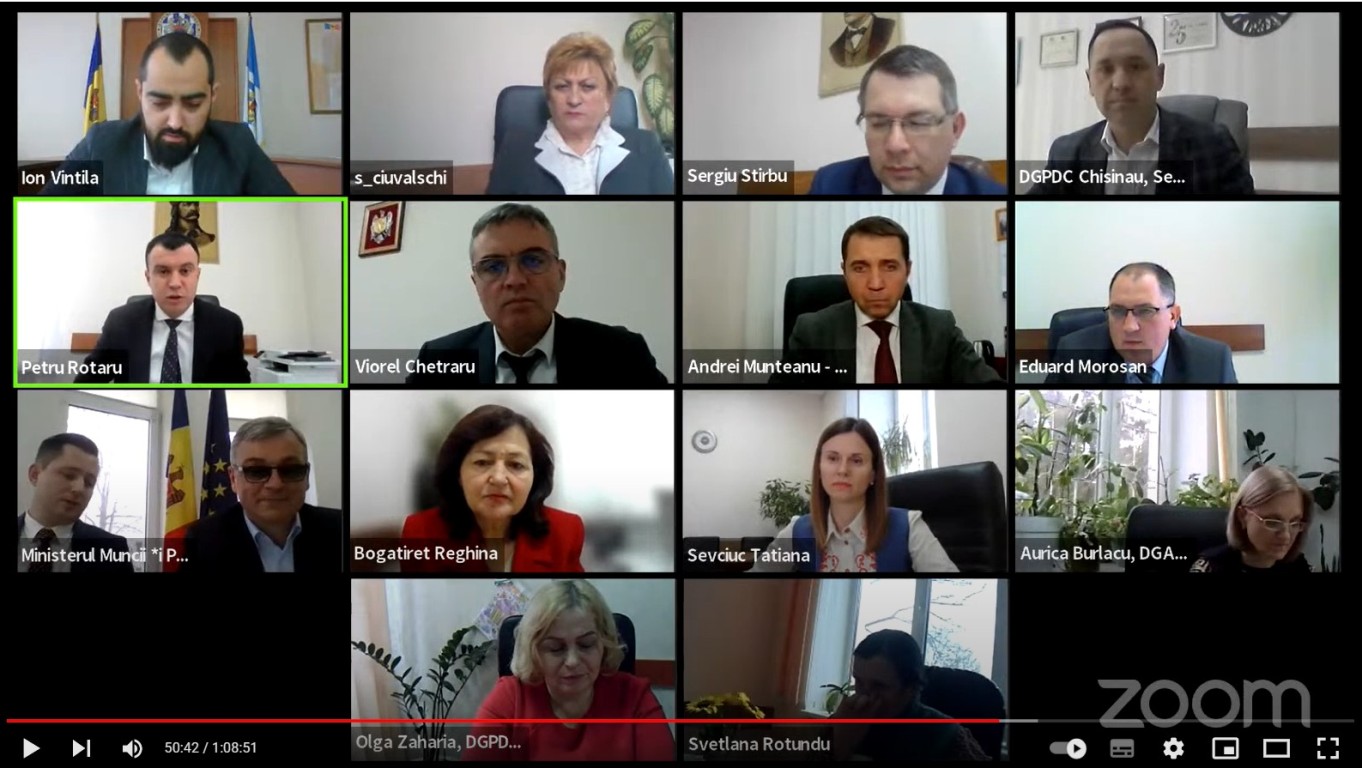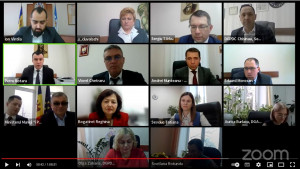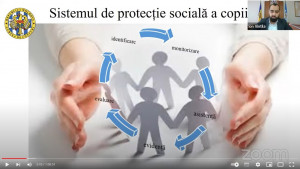
The adoption process of children at risk, carried out by the national public authorities, is accompanied by non-compliances, according to the external public audit.
In this context, the Court of Accounts of the Republic of Moldova (CoARM) examined, during the public meeting from December 22, the Audit Report on the compliance of special protection procedures for children at risk.
The purpose of the audit was to assess the compliance of the procedures for the special protection of children at risk, including the processes of placing children in difficulty in specialized centers, as well as adoption, for the period during 2019-2022. Thus, the evaluation processes of children at risk, with their placement in social services, within 12 territorial guardianship authorities, were verified.
According to statistical data, about 60% of children in the Republic of Moldova live with both parents, and 11% do not live with any of the biological parents. About 28% of children in the country live below the poverty line.
In 2013, Law no. 140/2013 was adopted on the special protection of children at risk and children separated from their parents, which includes special articles related to their identification, assessment, assistance, referral, monitoring and recording, as well as the duties of the institutions responsible for applying these procedures. The legislative framework also regulates the method of assessing the child's situation, the record and assistance of children at risk, taking the child from the parents or from the persons in whose care he is, the emergency placement, the planned placement of children separated from parents.
According to the systematized audit data, during 2019-2021, the territorial guardianship authorities for the protection of children's rights ensured the placement of about 15 thousand children, which indicates a decreasing trend. The number of children placed in placement-type services in developing community centers and homes is also decreasing, priority being given to social services, which keep the child in a family environment. The Court of Accounts found that, in the case of children at risk, the state institutions ensured the evaluation, identification, placement and monitoring of children at risk, some non-compliances being identified.
Thus, the audit revealed that the Ministry of Labor and Social Protection (MLSP) does not have the State Register of children at risk and of children separated from their parents, the statistical data being collected from the Local Guardianship Authorities, which have improvised registers. A positive aspect in this regard was the approval in June 2022 of the Information System Concept in the field of Child Protection, which is intended for the case management of children in the records of the competent authorities and the follow-up of the social services provided to children or the forms of protection identified for children.
The Court of Accounts found non-compliance with the legal framework and the lack of effective monitoring by the local public administration authorities (LPAA) in the context of providing social housing for orphans who have reached the age of 18. The assessment of the situation within 12 LPAs of level I and II established that during 2019-2022, out of 24 children who left the foster care institution upon reaching the age of 18, only 8 young people from 3 local public authorities received residential spaces. It is mentioned that, in 9 LPAs of level II, 16 children have not been assigned social housing until now. The regulatory non-fulfillment of their duties was motivated by the entities due to the lack of available housing spaces.
The Court of Accounts warns about the lack of a regulatory framework that would exhaustively regulate the creation of specialized centers for vulnerable children, who practice vagrancy, begging, prostitution, in order to create opportunities for social inclusion and reduce the influence of the risk environment. It is recommended to improve the communication of the competent authorities in the case of the protection of the category of children who require re-education measures in case of deviant behavior.
The normative framework regarding national and international adoption regulates the attributions of central public authorities, territorial guardianship authorities at the level of public authorities of rank I and II. According to data from the State Register of Adoption, 305 children were adopted between 2019 and 2022, of which 282 children were adopted through the national adoption procedure and 23 children through international adoption. At the same time, the Registry includes 332 national adopters, 24 international adopters and 570 children with adoptable child status. The share of adoptable children up to the age of 5 is 12%, and adoption requests are mostly for this age category.
The audit detected non-compliances in the adoption process of children at risk, such as the lack of monitoring mechanisms for children adopted through the national adoption procedure and left with their adopted parents abroad. 18 children adopted through the national adoption procedure went abroad with their adoptive parents, not being monitored post-adoption by the responsible local authorities. The existing legal framework does not delineate the responsibilities of national authorities regarding responsibility for monitoring these adopted children. The audit shows the persistence of the risk of national adoption, which is a simpler procedure compared to the international one, the real purpose of international adoption being pursued.
The main causes that determined the presence of the elucidated non-compliances are the lack of the Register of children at risk, the lack of specialized centers for children with severe vulnerability, the lack of monitoring mechanisms for children adopted through the national adoption procedure and left with their adopted parents abroad, as well as insufficient transparency at the initiation of the adoption process.
 WITH DEFICIENCES OF VIEW
WITH DEFICIENCES OF VIEW Youtube
Youtube Facebook
Facebook


 print
print






